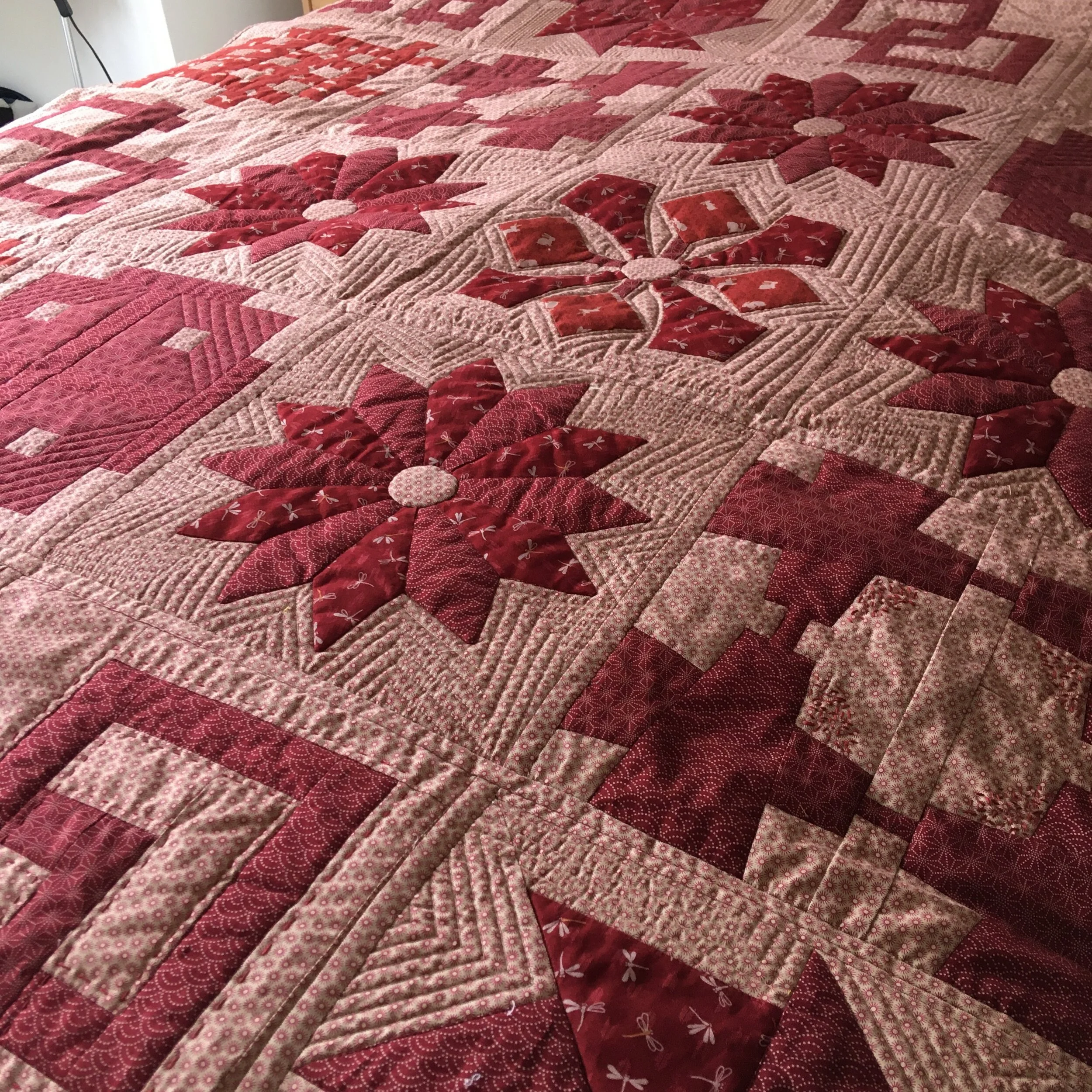Japan
It’s been a strange time since the middle of March - lockdown has affected everyone in different ways. I have been surprised by how I have been affected. Like many, I thought ‘great, a chance to get on with my sewing’ - so many ideas fizzing in my head. However I have struggled with creative and strategic thinking, which means many things have not progressed. Which is one reason why I have not blogged, However I have not stopped sewing, just been making scrappy quilt blocks - string blocks and scrapvortex blocks with a log cabin approach.
So why is this post entitled Japan? I have always had a fascination with Japan and China, maybe because my Great Grandfather, William John Anstey, was an engineer in the navy, spending time out east, and my family home always had a variety of oriental artworks, some of which I have inherited. I have been fortunate to visit Singapore, Hong Kong and China, but not made it to Japan. So my ambition is to do a textile tour to Japan when this is all over - maybe in 2022 as a 70th year celebration.
So the rest of this blog is images with a Japan association.
William Anstey (1860-1936) was an Engineer Rear -Admiral at the beginning of the twentieth century and was Chief Engineer of the Hong Kong Dockyard 1900-1904. He brought back many Chinese and Japanese artefacts, including a Samurai sword!
Lockdown reading: the potter Edmund de Waal’s story of tracing the Japanese netsuke collected by his great great uncle in the 19th century resonated with my desire to know more about the oriental artefacts around me.
A flowering cherry, known in my family as a ‘Japanese cherry’, the three houses I have lived in the longest have all had one in the garden - a real harbinger of spring.
Sashiko, a Japanese stitching method originally used to stitch together layers of cloth, creating insulating air pockets for additional warmth. Now a popular technique for slow stitching. This is my first attempt using a kit from Japan crafts .
And finally two images of my 'Japanese quilt’ . I didn’t know when I signed up to Nadine Paver’s Block of the Month class at York School of Sewing that she had designed a quilt based on traditional Japanese blocks, nor that I would instinctively choose Sevenberry fabrics from Japan, based on traditional Japanese designs. It all came together to make something I am so pleased with.




















